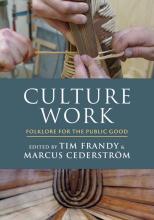Medieval Icelandic literature is challenging to teach because it is challenging to read. Even in translation, medieval sagas of Viking Age heroes are dense and unforgiving. The number of characters one must keep track of boggles the mind, as does the foreign geography, which plays such a fundamental and meaningful part of the storytelling, but which inevitably dissolves into a mental soup of characters and places named Thor-this and Thor-that. Meanwhile, the story—a very nuanced and poetic commentary on justice, who has access to it, and how the intersections of race, gender, class, religion, and privilege affect that access—goes by wholly unappreciated. New readers don’t know who’s who, who’s where, what the rules and social norms are of this society they’ve only just encountered, and why seemingly minor transgressions can spiral into cyclones of homicidal violence. However, those who spend a decade studying the sagas come to love them, to recognize each and every Thor by name, to track their travels over heath and moor, to comprehend the machinations of their complex feuds, and to cherish the sagas’ deeper themes and insightful lessons. The question is: how does one teach Iceland’s medieval literature to someone who hasn’t got a decade to spare? What if, as is the case in many college classrooms, you only have one week?
This chapter explores new avenues made open to folklorists by digital means for translating contextual elements in a textual (or hypertextual) medium. Using widgets in Apple iBooks and tools such as Google Maps, it is possible to represent the medieval audience’s cultural and historical knowledge as well as their phenomenological understanding of geography. While impossible to recreate a folkloric event that can never be fully known, it is possible using digital means to translate something of the immanent whole that is necessary to interpreting these medieval texts. Meaningful translation goes beyond the mere linguistic translation of a text, and requires the inclusion and translation of the cultural context of the folkloric material, for which new and digital methods are especially useful.
